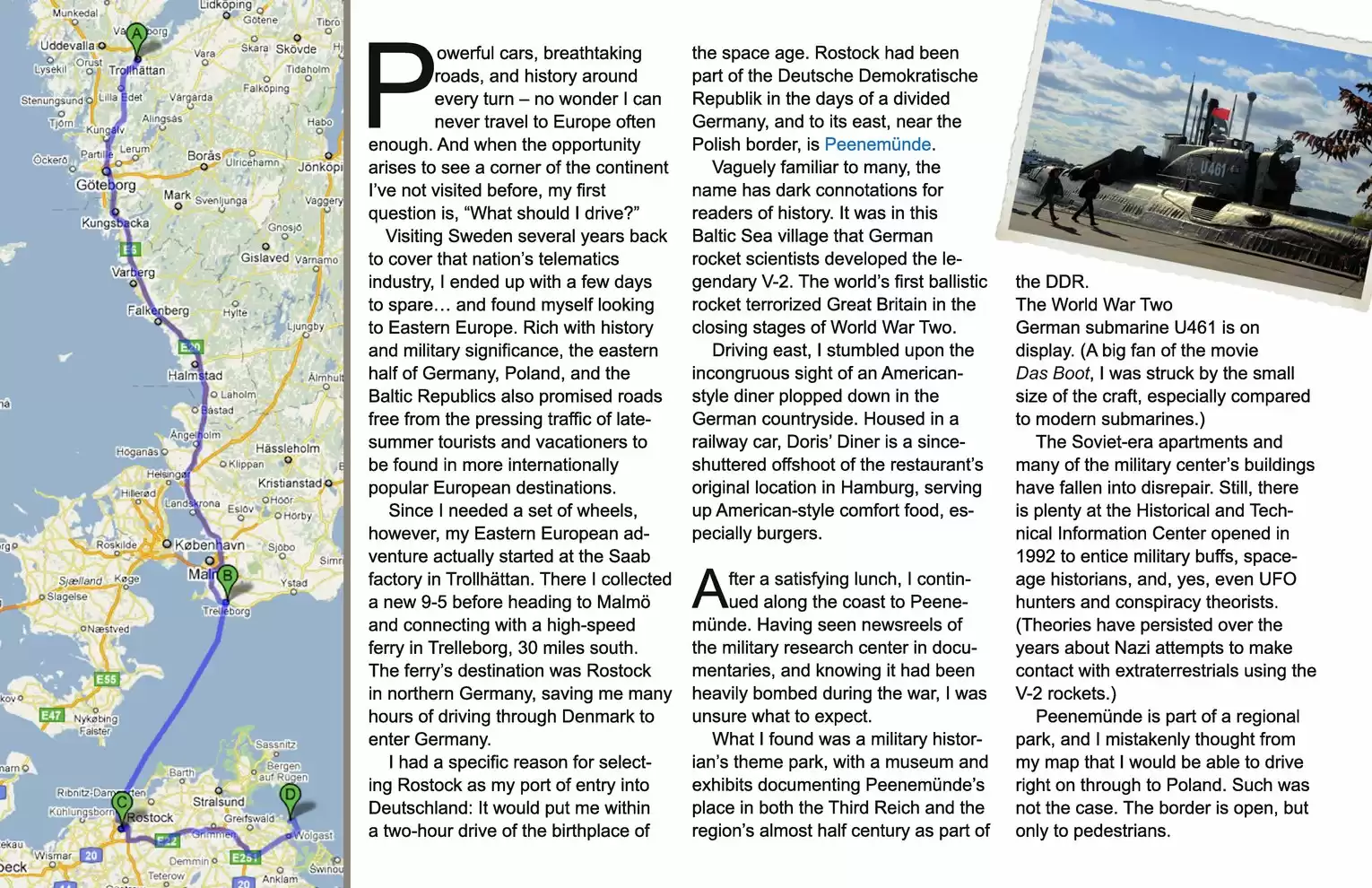
Powerful cars, breathtaking roads, and history around every turn--no wonder I can never travel to Europe often enough. And when the opportunity arises to see a corner of the continent I've not visited before, my first question is, "What should I drive?"
Visiting Sweden several years back to cover that nation's telematics industry, I ended up with a few days to spare... and found myself looking to Eastern Europe. Rich with history and military significance, the eastern half of Germany, Poland, and the Baltic Republics also promised roads free from the pressing traffic of late-summer tourists and vacationers to be found in more internationally popular European destinations.
Since I needed a set of wheels, however, my Eastern European adventure actually started at the Saab factory in Trollhättan. There I collected a new 9-5 before heading to Malmö and connecting with a high-speed ferry in Trelleborg, 30 miles south. The ferry's destination was Rostock in northern Germany, saving me many hours of driving through Denmark to enter Germany.
I had a specific reason for selecting Rostock as my port of entry into Deutschland: It would put me within a two-hour drive of the birthplace of the space age. Rostock had been part of the Deutsche Demokratische Republik in the days of a divided Germany, and to its east, near the Polish border, is Peenemünde.
Vaguely familiar to many, the name has dark connotations for readers of history. It was in this Baltic Sea village that German rocket scientists developed the legendary V-2. The world's first ballistic rocket terrorized Great Britain in the closing stages of World War Two.
Driving east, I stumbled upon the incongruous sight of an American-style diner plopped down in the German countryside. Housed in a railway car, Doris' Diner is a since-shuttered offshoot of the restaurant's original location in Hamburg, serving up American-style comfort food, especially burgers.
After a satisfying lunch, I continued along the coast to Peenemünde. Having seen newsreels of the military research center in documentaries, and knowing it had been heavily bombed during the war, I was unsure what to expect.
What I found was a military historian's theme park, with a museum and exhibits documenting Peenemünde's place in both the Third Reich and the region's almost half century as part of the DDR. The World War Two German submarine U461 is on display. (A big fan of the movie Das Boot, I was struck by the small size of the craft, especially compared to modern submarines.)
The Soviet-era apartments and many of the military center's buildings have fallen into disrepair. Still, there is plenty at the Historical and Technical Information Center opened in 1992 to entice military buffs, space-age historians, and, yes, even UFO hunters and conspiracy theorists. (Theories have persisted over the years about Nazi attempts to make contact with extraterrestrials using the V-2 rockets.)
Peenemünde is part of a regional park, and I mistakenly thought from my map that I would be able to drive right on through to Poland. Such was not the case. The border is open, but only to pedestrians.
| Previous Page | Next Page |
Contents
Features:
- Old Faithful Road Trip
- Tank of Gas Adventure: Berks County Wine Trail
- How to Survive Your First RV Road Trip
- Driving the Baltic Way
Departments:
- Behind the Wheel: 2011 Mitsubishi Lancer
- Behind the Wheel: 2011 Volkswagen Touareg Hybrid
- Not Found on eBay
- Travel and Book Reviews
- Travel News
- Auto News
- Cruising Round-Up
- Contributors